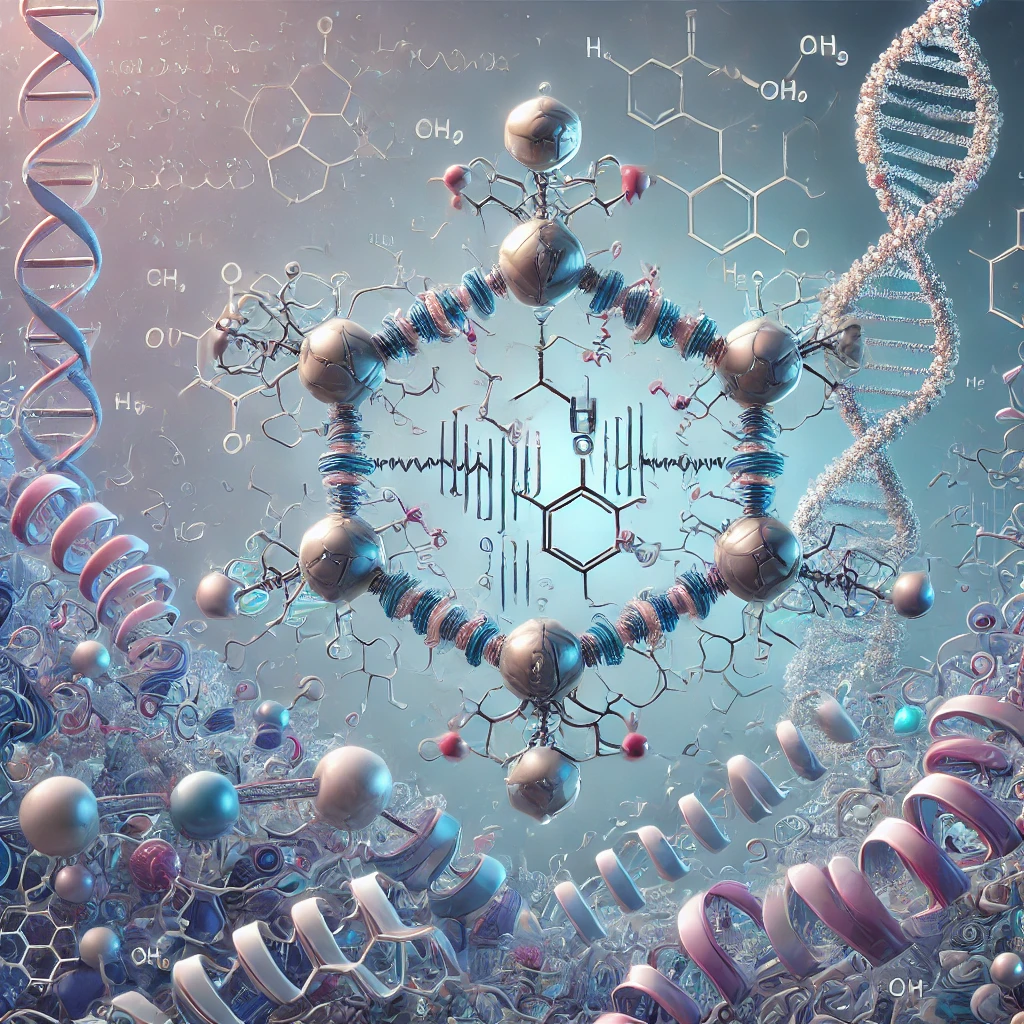
Anti-peptide antibodies: a tool for the specific detection of peptides
The use of anti-peptide antibodies in scientific research offers interesting prospects for the specific detection of peptides. These antibodies, known for their high specificity, facilitate the identification and measurement of peptides, which are key elements in many biological and biochemical processes. Moreover, interest in these tools continues to grow, particularly in the study of recombinant proteins, enhancing their relevance within molecular genetics research and various research applications.
The definition and roles of peptides
Understanding peptides
Peptides are molecules formed from short chains of amino acids linked together by peptide bonds. Typically composed of fewer than 50 amino acids, these molecules play a crucial role in many biochemical mechanisms. Their small size often allows them to easily cross cell membranes, making them key players in intracellular processes. Peptides can be of natural origin or synthesized in the laboratory for specific applications. The three-dimensional structure of peptides is strongly influenced by the sequence of amino acids that compose them, which determines their activity in various molecular contexts.
Functions of peptides
Peptides are involved in various essential biochemical processes. They act as messengers, regulators, or modulators in mechanisms such as signal transmission, enzymatic activation, and response to external agents. Some peptides play roles in regulating the activity of other molecules, while others, like antimicrobial peptides, contribute to defense against certain pathogens. Furthermore, their ability to interact with receptors or other biomolecules makes them particularly interesting in the development of new research strategies.
The development of antibodies
The development of anti-peptide antibodies represents a significant advancement in the targeted detection of peptides. When a specific peptide is introduced into an organism, the immune system responds by producing antibodies capable of recognizing and binding specifically to that peptide. This reaction is exploited in the laboratory to develop specific antibodies that can then be used to detect, isolate, or quantify peptides in complex samples.
One of the major advantages of this approach lies in the ability of anti-peptide antibodies to identify specific targets in environments where many other molecules are present, thus facilitating the analysis of complex biological systems. However, the antibody production process is delicate, requiring in-depth expertise to ensure their specificity and reproducibility.
Peptides, typically composed of 12 to 30 amino acids, can be as effective as larger proteins in generating a strong immune response, whether they are polyclonal or monoclonal antibodies, often with titers exceeding 20,000.
The successful production of anti-peptide antibodies relies on several factors, such as the selection of the peptide sequence, peptide synthesis, conjugation to a carrier protein, choice of host animal, and purification of the antibodies. Among these steps, selecting the optimal peptide sequence is undoubtedly one of the most challenging and critical aspects of the process. Although there is no precise method for designing peptide antigens, following certain guidelines can significantly increase the chances of producing high-quality anti-peptide antibodies.
In general, 5 to 20 mg of peptide is sufficient for immunization, preparing an affinity column, and determining antibody titer through an ELISA (enzyme-linked immunosorbent assay) test. Typically, it takes about four months to obtain an anti-peptide polyclonal antibody from a rabbit, producing approximately 30 mL of serum, which results in 2 to 3 mg of specific antibodies after affinity purification with the peptide.
Specificities of anti-peptide antibodies
Generation of anti-peptide antibodies
The production of peptide-specific antibodies relies on a rigorous process. The target peptide is first identified and synthesized before being used to immunize organisms, typically animals, to elicit an immune response. The antibodies produced from this response are then purified and tested to verify their specificity and efficacy. This process includes several steps:
- Selection of the peptide sequences of interest.
- Immunization of animals to generate an antibody response.
- Extraction and purification of antibodies from blood samples.
- Verification of antibody specificity through in vitro tests.
- Adjustment of dilutions to optimize their performance in detection experiments.
Each step is crucial to ensure the quality of the antibodies and their ability to interact specifically with the target peptide under various experimental conditions.
Growing interest in anti-peptide antibodies
There is a growing interest in anti-peptide antibodies across many scientific fields. Their ability to specifically detect peptides opens new opportunities for studying molecular interactions and complex biological mechanisms. These tools not only allow for the precise identification of peptides but also enable the development of faster and more reliable detection methods. Their versatility is also highlighted in areas such as protein engineering, where they are used to improve the characterization of recombinant proteins.
Specific detection of peptides
Traditional detection methods
The detection of peptides has historically relied on techniques such as high-performance liquid chromatography (HPLC) or enzyme-linked immunosorbent assays (ELISA). Although these methods have proven effective, they have certain limitations in terms of specificity or sensitivity, especially when the peptides of interest are present in low concentrations or within complex matrices.
New tools for better identification
The introduction of anti-peptide antibodies represents a significant improvement over these traditional methods. Thanks to their increased specificity, these antibodies allow for more accurate detection of peptides, even in complex environments. Additionally, their ability to specifically interact with a target peptide paves the way for more precise studies of molecular interactions and peptide dynamics in various systems.
Peptides and anti-peptide antibodies for affinity microarrays
Peptides and anti-peptide antibodies play a key role in the design of affinity microarrays, essential tools for analyzing protein-peptide interactions. These microarrays, suitable for small- and medium-scale formats, efficiently test multiple interactions on a miniaturized surface. They facilitate the detection of specific epitopes, the study of interaction networks, and the characterization of new antibodies or ligands, while optimizing the sensitivity and specificity of analyses. Their use offers promising perspectives in both fundamental and applied research, particularly in diagnostics and biomarker discovery.
Application to recombinant proteins
Anti-peptide antibodies are particularly useful for studying recombinant proteins. These proteins, produced by genetically modified organisms, are often challenging to characterize due to the complexity of the matrices in which they are expressed. Anti-peptide antibodies provide a solution to this problem by allowing precise and reliable detection of recombinant proteins, thereby facilitating their study and use in various research applications.
Cytochemical and histochemical applications of anti-peptide antibodies
Anti-peptide antibodies are particularly useful in immunocytochemistry (ICC) and immunohistochemistry (IHC), where antigens can denature due to tissue and cell fixation. Anti-peptide antibodies can be directed against any defined sequence, including unknown putative proteins and post-translationally modified sequences. These antibodies serve to locate and visualize proteins in fixed tissues or cells, which is essential for studying cellular distribution, structure, and pathologies. Furthermore, the large availability of the antigen (peptide) allows for inhibition/absorption controls, which are crucial in ICC/IHC, as there are numerous possibilities for false positive reactions due to Fc receptors of immunoglobulins, non-specific reactions, and cross-reactivity of primary and secondary antibodies with other antigens and endogenous immunoglobulins.
Applications in research
Antibodies directed against peptides, also known as anti-peptide antibodies, have numerous applications in research and diagnostics due to their specificity for short peptide sequences. Here are some common applications:
- Western blot : Anti-peptide antibodies are used to detect specific protein fragments or domains in complex mixtures, providing information on protein expression and post-translational modifications.
- Immunoprecipitation : They allow for the isolation of specific proteins or protein complexes from cell lysates by binding to their peptide sequences, thus facilitating the study of protein interactions.
- ELISA (Enzyme-Linked Immunosorbent Assay) : Anti-peptide antibodies are widely used in ELISA tests to quantify proteins or peptides, especially when complete proteins are unavailable or difficult to purify.
- Studies on phosphorylation and post-translational modifications : Anti-peptide antibodies can be designed to recognize specific post-translational modifications, such as phosphorylation, acetylation, or methylation, helping to explore signaling pathways and regulatory mechanisms.
- Biomarker discovery and diagnostic test development : Anti-peptide antibodies can detect disease-specific peptides, making them valuable for identifying biomarkers and developing diagnostic tests, particularly for cancer and neurodegenerative diseases.
- Functional studies : They can be used to block or neutralize specific protein domains, allowing researchers to understand protein functions and their mechanisms.
- Affinity purification : Anti-peptide antibodies can purify target proteins or peptides from biological samples, thereby helping to obtain highly specific analytes for further studies.
In summary, the use of anti-peptide antibodies represents a powerful tool for the specific detection of peptides in many scientific disciplines. Their specificity and versatility make them valuable allies in research. This offers promising perspectives for studying molecular interactions and protein engineering. By combining these tools with modern molecular biology technologies, researchers can push the boundaries of knowledge, paving the way for new major scientific discoveries.
References
- Rowlands, D. J., et al. (1983) Chemical basis of antigenic variation in foot-and-mouth disease virus. Nature 306, pp. 694-697.
- Trier, N.H., Hansen, P.R. and Houen, G., (2012). Production and characterization of peptide antibodies. Methods, 56(2), pp.136-144.
- Zhang, F., Cleaver, S., Gardner, M., Briones, A. and Soloviev, M., (2022). Peptides and Anti-peptide Antibodies for Small- and Medium-Scale Peptide and Anti-peptide Affinity Microarrays. In: Peptide Microarrays: Methods and Protocols, pp. 103-120. New York, NY: Springer US.
- Friis, T., Pedersen, K.B., Hougaard, D. and Houen, G., (2024). Cytochemical and Histochemical Staining with Peptide Antibodies. In: Peptide Antibodies: Methods and Protocols, pp. 249-263. New York, NY: Springer US.
- Kitamura, N. and Galligan, J.J., (2023). A global view of the human post-translational modification landscape. Biochemical Journal, 480(16), pp.1241-1265.
- Aparicio, B., Ruiz, M., Casares, N., Silva, L., Egea, J., Pérez, P., Albericio, G., Esteban, M., García-Arriaza, J., Lasarte, J.J. and Sarobe, P., (2023). Enhanced cross-recognition of SARS-CoV-2 Omicron variant by peptide vaccine-induced antibodies. Frontiers in Immunology, 13, p.1044025.



